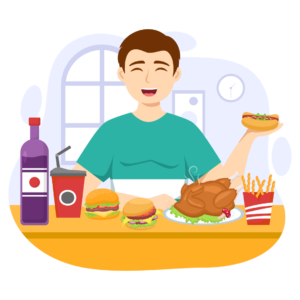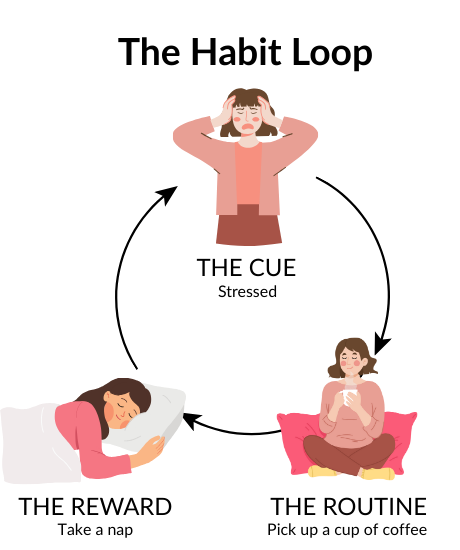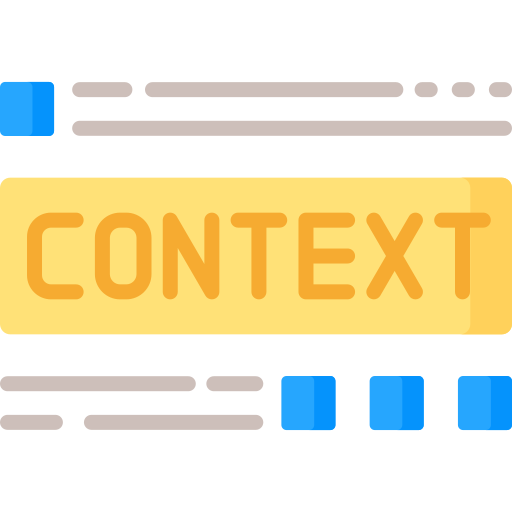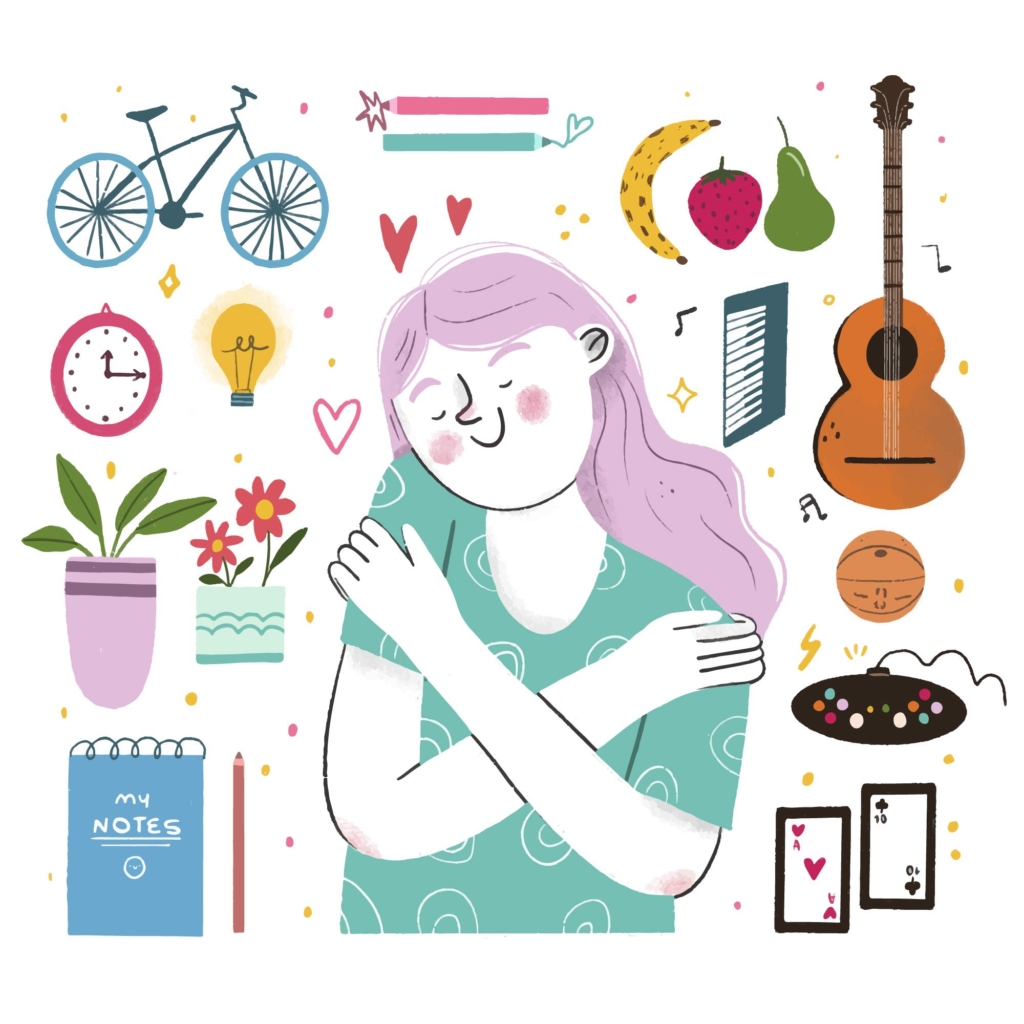How to break bad habits starts with recognizing how automatic they are. We reach for a late-night snack, scroll at 2 a.m., or hit snooze instead of going for a run, almost without thinking.
Habits are mental shortcuts our brains create to save energy. Neuroscientists call this “automaticity”: when a behavior is repeated often enough, it becomes an unconscious response to a cue. Research highlights the basal ganglia’s major role in locking in repeated routines, freeing up mental space for other decisions. As psychologist Wendy Wood explains in Good Habits, Bad Habits (2019), nearly 43% of our daily behaviors are habitual, done with little deliberate thought.

Cue → Behavior → Reward
Cue: stress, boredom, time of day, or seeing your phone
Behavior: scrolling, nail-biting, procrastinating
Reward: relief, distraction, or a small dopamine hit.

The striatum bundles actions into routines.
The infralimbic cortex stabilizes those routines so they persist even when motivation fades.
Once habits are learned, they’re tied to strong neural pathways and resist change:
Reward-driven loops: Even unhelpful habits deliver micro-rewards that reinforce the cycle.
Environmental cues: Habits are triggered by places, emotions, or people (e.g., coffee paired with cigarettes).
Identity & self-concept: As James Clear notes in Atomic Habits, durable change depends on who you believe you are. If you see yourself as a “night owl,” waking up early feels unnatural.
Limited willpower: Research (e.g., Baumeister) suggests self-control can become depleted, making it easier to fall back into old routines, especially under stress or decision fatigue.
Put simply: bad habits feel easier because they’re rewarding, familiar, and neurologically efficient.

The good news? Habits can be reshaped. Use these research-backed strategies:
Context is a powerful cue. Make healthy habits visible and unhealthy ones harder to access. (Wendy Wood, 2019)
Keep fruit on the counter; put chips out of reach.
Place running shoes by the door.
Create a work zone free of digital distractions.

Habits form through repetition, not intensity. BJ Fogg (2019) suggests starting tiny, floss one tooth, do two push-ups, and write for five minutes. Over time, small actions compound.

Anchor new habits to old ones: “After I make tea, I’ll write three gratitude lines.”
Expect 6–9 months for habits to fully stick, consistency is the driver.
Dopamine strengthens habit loops. Celebrate even small steps.
Track streaks in a journal or app.
Pair hard tasks with small pleasures afterward.
Notice immediate benefits (calm, energy, clarity) right after the behavior.

Adopt identity-based language: instead of “I want to run three times a week,” try “I am a runner.” When actions align with identity, they stick more naturally.

Research by Dr. Kristin Neff shows self-compassion fosters resilience. Replace “I failed again” with “This is hard, but I’m learning. Tomorrow is another chance.” Compassion reduces shame, fuel for relapse, and keeps you engaged.

Change rarely happens overnight. But by reshaping cues, starting small, repeating consistently, and pairing actions with rewards, you’re not just changing habits; you’re reshaping your brain.
Habits are the architecture of our lives: efficient, powerful, and sometimes stubborn. With patience and the right strategies, you can break old patterns and build routines that support who you want to become.

Ready to build healthier habits? Book an appointment with Scarborough Psychology Clinic.
Breaking Bad (Habits): from addiction to action – Brain Matters. (n.d.). https://www.brainmatters.nl/en/breaking-bad-habits-from-addiction-to-action/
Graybiel, A. M., & Smith, K. S. (2014). Good habits, bad habits. Scientific American, 310(6), 38–43. https://www.jstor.org/stable/26039932
McQuaid, M., PhD. (2019, November 29). An interview with professor Wendy Wood. Psychology Today. https://www.psychologytoday.com/ca/blog/from-functioning-to-flourishing/201911/3-simple-hacks-for-building-healthy-habits
Mendelsohn, A. I. (2019). Creatures of Habit: the neuroscience of habit and purposeful behavior. Biological Psychiatry, 85(11), e49–e51. https://doi.org/10.1016/j.biopsych.2019.03.978